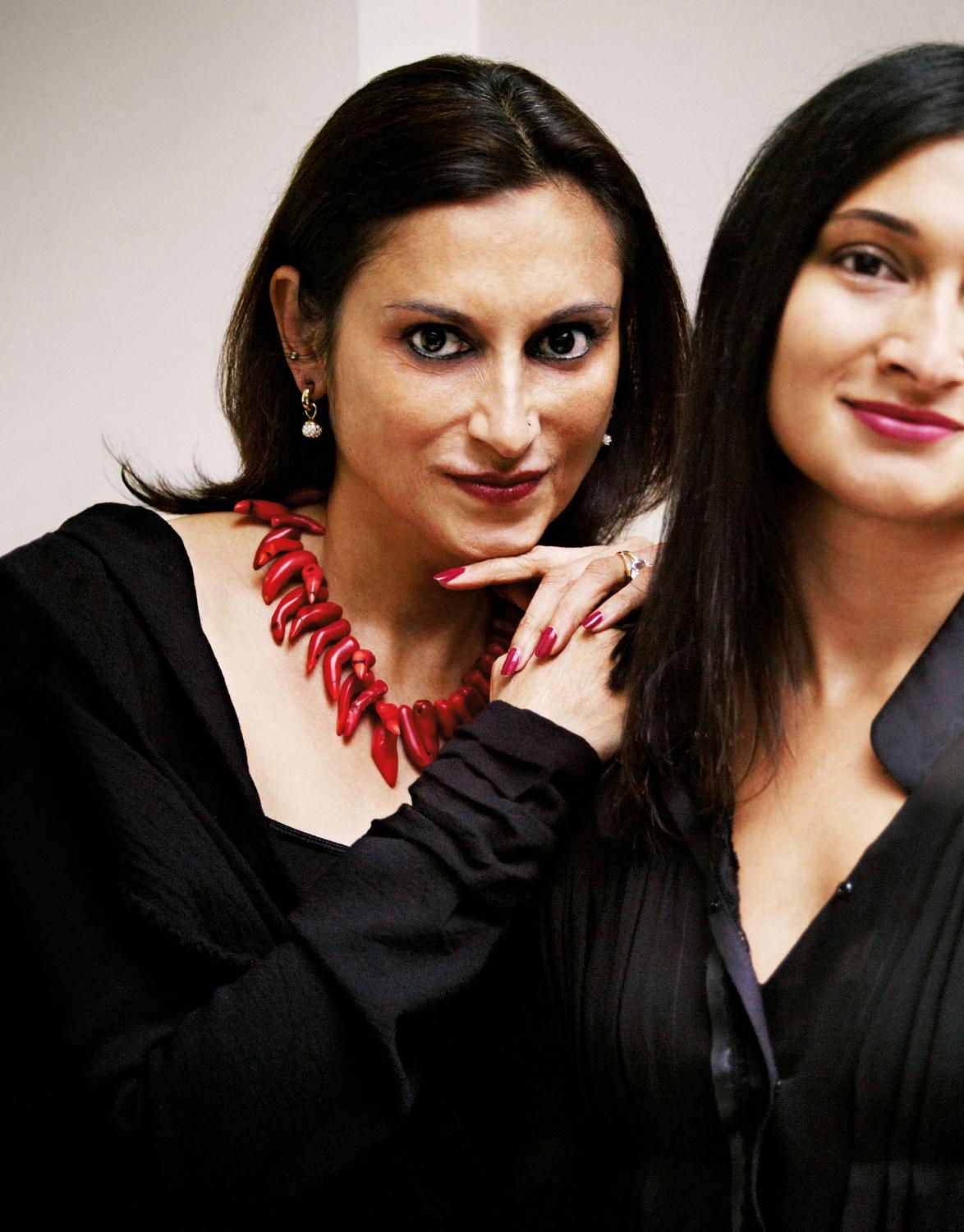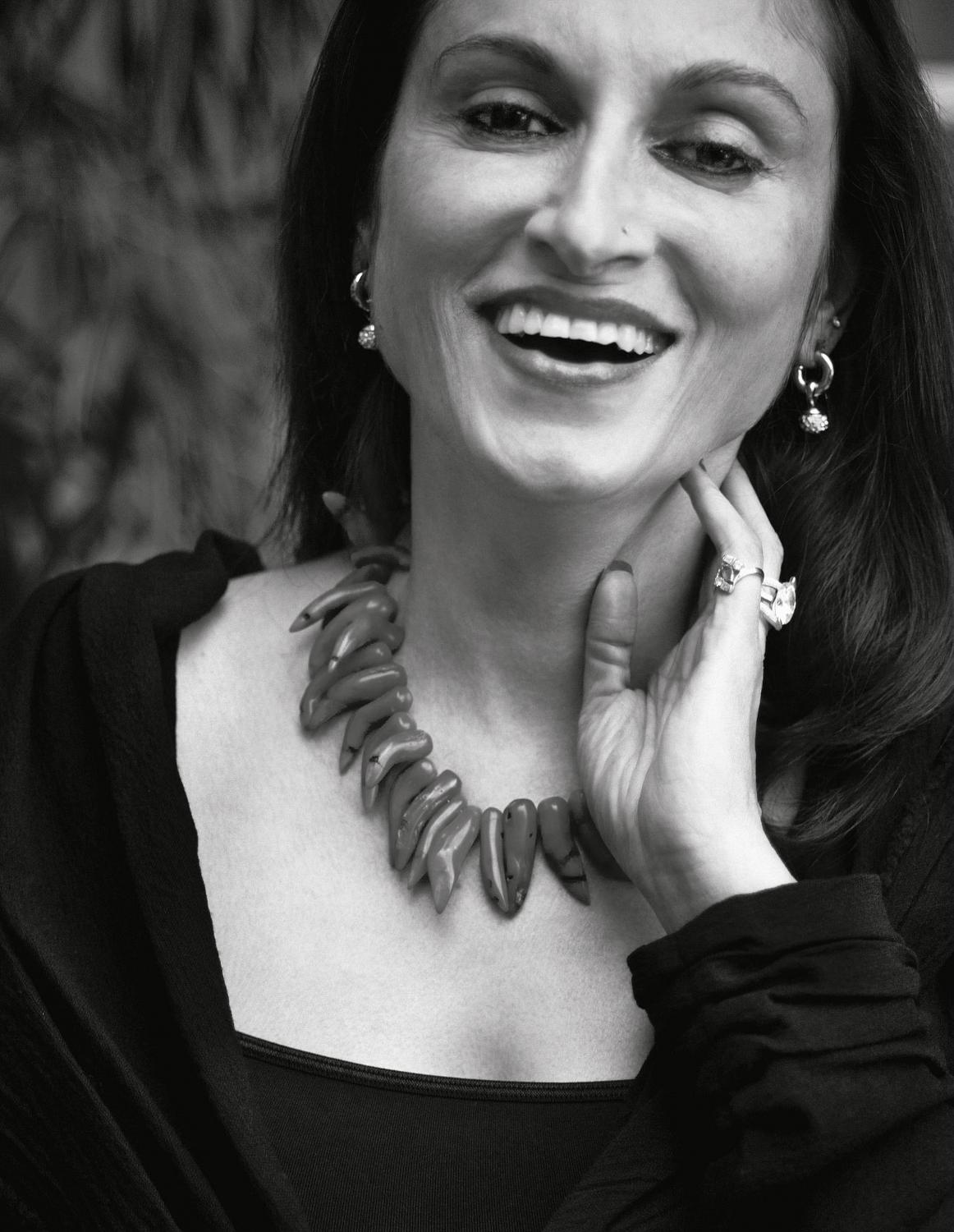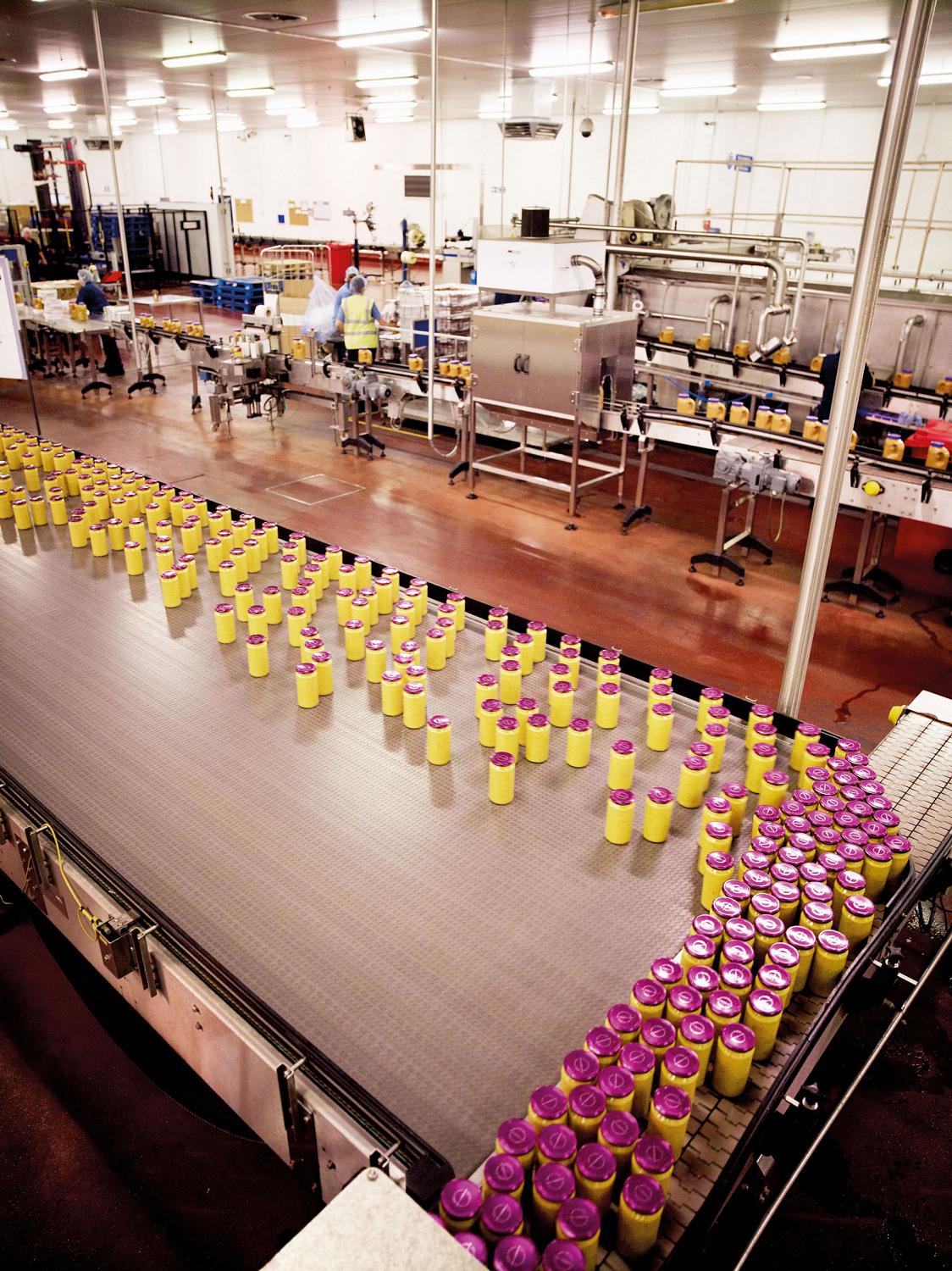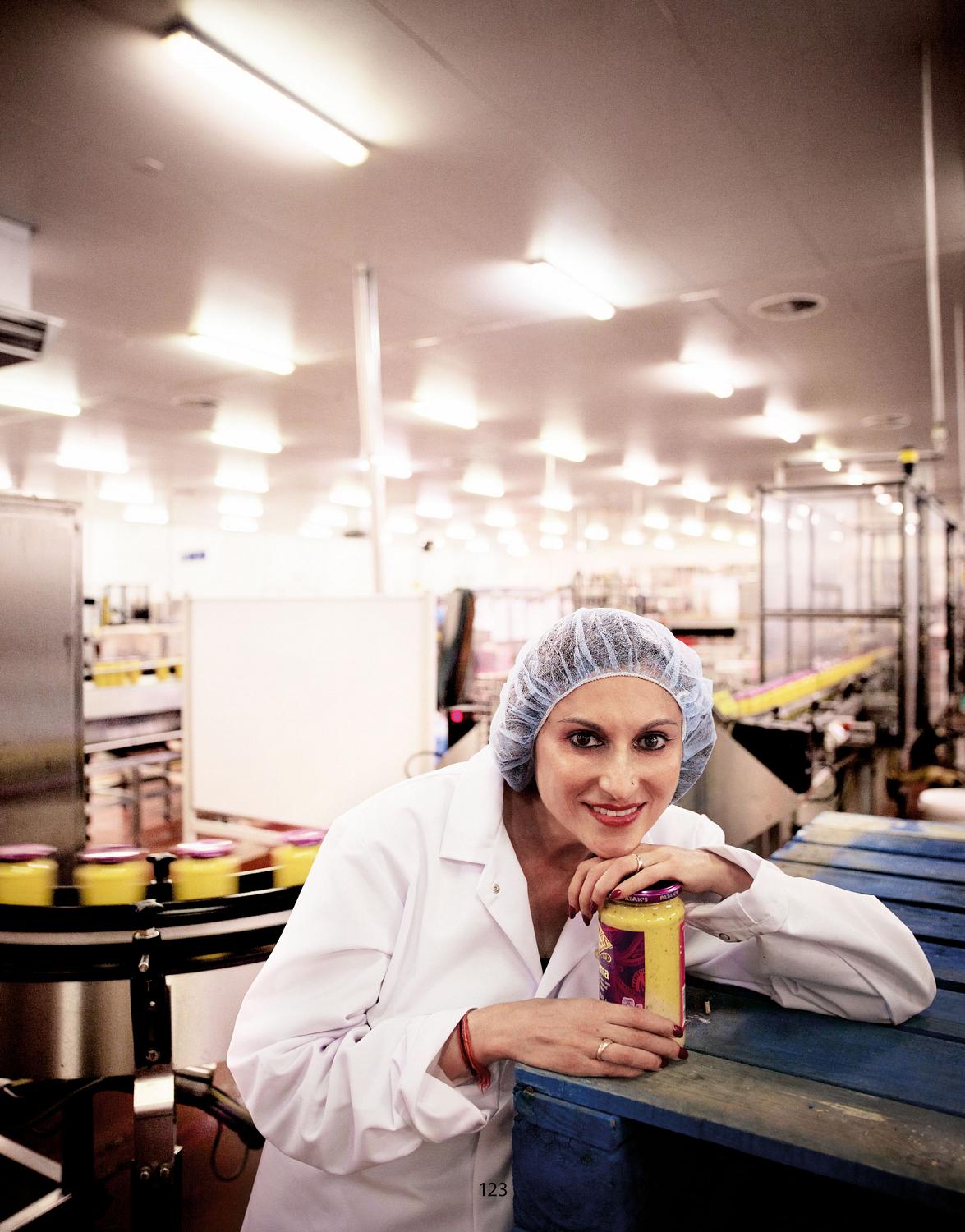Meena
Pathak
She literally changed the taste of curry

Anyone who, over the past 30 years, has bought a jar of curry sauce to magic up a late-night feast has probably tasted one of Meena Pathak’s products. Since leaving a promising Bollywood career in Mumbai in 1976 for her husband’s pickle factory in Buckinghamshire, England, Meena has developed and promoted the family brand with awe-inspiring energy, revolutionising the way the world enjoys Indian cuisine.
Her tireless pursuit of authenticity and her pioneering gusto are famous across the globe, thanks also to her travelling road show, and have earned her the tabloid moniker of ‘the original Spice Girl’. But unlike Baby, Scary and Posh, Meena has had the delightful honour of being made a member of the Order of the British Empire by Her Royal Highness Queen Elizabeth II herself.
To meet Meena in person, one must travel to Lancashire in the northwest of England, summon a taxi at Wigan station, drive for 30 minutes across hill and dale, find oneself in a suburb of Bolton, then locate a discreet side turning and a gate that opens automatically at the push of an unseen button. Outside the house there’s a Jeep with a personalised licence plate saying ‘PATAK’, and a smaller car bearing the legend ‘I WON’. Outside the front door, a garden gnome fishes in a small pond.
The Pathak drawing room breathes success and good living. There are a low-level cream leather sofa, an abbreviated red velvet chaise longue and two display cabinets of delicate wood with inlaid mother-of-pearl, containing a bonsai menagerie of little glass figurines: dolphins, tigers, parrots, ducks, ships, swans, tortoises and seahorses. The Hindu elephant god Ganesh is represented by a brass statue in the picture window overlooking the garden, accompanied by a king cobra and a sitar. On the side wall, several more Ganeshes – in glass, wood and Lalique crystal – can be found squatting regally.
In the dining room next door, Yoda the parrot sits on top of his cage and, throughout my visit, issues random whistles, oaths and pieces of picked-up chitchat, like a loquacious but unseen Irish drunkard who has inexplicably taken up residence in this handsome suburban palace.
Meena Pathak arrives rather slowly and grandly, not because she’s naturally slow or grand but because she’s hobbling painfully on crutches. She recently fell down a marble staircase and is still recuperating. This does not stop her cutting a dash in a red-and-blue cotton tunic, rust-coloured designer trousers and a quantity of sparkling costume jewellery. Her eyes are huge and brown, made up to emphasise the slightly scary directness of her gaze.
Her accident hasn’t slowed down her shedule of commitments. Tomorrow she will receive an honorary doctorate from the University of Bolton.
For services to food, or to cultural understanding?
“Well,” she says sleekly, “I was maybe a little helpful in turning the college into a university. Maybe a bit of a catalyst. They gave me an honorary fellowship before, and I used to help them out whenever I could.”
What exactly does she mean by helpful? Did she endow a library or something?
“Oh no,” she says vaguely. “I just gave them some of my time and advice whenever I could.”
She’s clearly fond, in her queenly way, of her adopted town where the bigwigs help each other out as neighbours do in India. “Bolton’s famous for producing some remarkable families,” she says proudly. “The Lever brothers, for instance, who founded Unilever, came from Bolton, and so do Warburtons, the bakers. Their factory and headquarters are still just up the road. This little town is quite famous for many things, actually.” Among which are the Pathaks, and the Indian sauce range that bears their name minus the middle ‘h’, for ease of customer pronunciation.

Meena loves jewellery. For this shoot, she brought an amazing necklace whose coral pieces resemble chillies. It is precious and seriously fun at the same time. In the opening image, Meena is pictured at her home in Bolton, England, with her daughter Anjali, who is wearing a black silk chiffon dress by PHILOSOPHY DI ALBERTA FERRETTI. Meena is wearing a black crêpe jacket by DONNA KARAN, available from Selfridges, London, over a black vest from HANRO.
Meena, of course, does not come from Bolton. She was born in Mumbai, into comfortable middle-class wealth: her mother was a dentist and her father was in the army. He was regularly sent to army bases in the mountainous Northeast Frontier regions, and his wife went too. This meant that young Meena did not see her parents for most of the year. “As a child, I travelled a lot to see them, otherwise I’d have been brought up entirely by my grandmother.”
Her mother, she says, was “a wonderful cook” but she didn’t acquire her passion for food from her mum. “In the family house in Mumbai, where I lived for ten months of the year, the cook was a male chef called Maharaj. He was a strict Brahmin – so strict, he wouldn’t let anyone enter the kitchen unless they’d had a shower. By the age of ten or eleven, I was in love with food. I was the only member of the family allowed to help the chef. Because he realised how passionate I was about food, he gradually imparted some recipes to me; then he started relying on me to finish off the meals.” She beams at the memory. “That was where I learnt to multitask in the kitchen, and work fast, because you were feeding a large family, starting with chapattis and rotis, and everything had to be hot and served fresh.”
Her mother sent her to a Catholic convent in Mumbai. “I was taught by Irish nuns – it was the best education money could buy, though of course I wasn’t converted.” Subsequently, her mother wanted her to become a doctor – or at least a dentist like herself. But Meena’s love of food took her in another direction.
She studied food technology and, on graduating, got a job in the banqueting wing of the Taj hotel group, one of India’s preeminent hotel chains, reputed for its landmark architecture and historic palaces. Being extravagantly pretty, she also took up modelling on the side, and it led to a film audition. She was offered a part in an early Bollywood* movie – but then, at 20, her life changed almost overnight.
She met Kirit Pathak, an Indian businessman based in England. He was in Mumbai on a trip to buy spices for his father’s company. “It was an arranged meeting,” she concedes, “but not a forced marriage or anything like that.” On the contrary, it seems to have been a whirlwind romance. “He asked me to marry him 48 hours after we met, and I said yes. My mother was horrified. Maybe it was naïve of me but I said to her, ‘If it doesn’t work, I’ll come back.’”
She was, she insists, in no hurry to hear wedding bells. “I was quite happy, working in hotels. I thoroughly enjoyed the job, I didn’t want to get married; I had no intention of settling down. I was moving up the rungs of the ladder very quickly, enjoying the interaction with different people.”
One of the many conditions she laid down to Kirit was; “I’m not going to be a normal housewife. I’m going to work, because that’s what I enjoy doing.” He sensibly agreed – in those days he lived in Buckinghamshire between Oxford and Northampton and jobs with hotel chains were thin on the ground in the countryside. “So Kirit said, ‘If you want to work for us, you’re very welcome.’ But I found out what the family business actually did only about three weeks after I got married and came to this country.”

A fresh consignment of Meena’s famous korma sauce makes its way down the production line at the Patak’s factory in Leigh, Lancashire.
The Patak company was founded in 1957 by Kirit’s father, Laxmishanker Pathak, who made samosas in the family kitchen in London. He and Kirit developed the business to the point that their succulent pickles had to be mass-produced in a factory in Brackley, Buckinghamshire. “He told me they had a shop,” said Meena, her voice rising to a squeak of indignation, “and I thought ‘Oh, OK, tobacconists and confectioners on a London street corner.’ That’s the picture I had in my mind. When he said, ‘We sell pickles,’ I thought he must buy them from India, wholesale, out of barrels. I never realised they were actually making them, and everything was automated in a factory.”
She came to England for the first time a week after her marriage. “My first time abroad, in November 1976. I arrived at Heathrow and headed for Brackley. It was dark at three in the afternoon! And I really felt the cold. My first impression, though, was of the family.” Kirit’s family came from Kenya, though his father Laxmishanker was originally from India, his mother from Zanzibar. His father had come to Britain in the 1950s as a refugee from Kenya with his wife and six children. With just a fiver in his pocket, he eventually made enough money from selling samosas to open a shop.
“Some of the family hadn’t come to our wedding. And when I walked into the house, I thought, ‘My God, what have I taken on?’ Because it was a large family and I came from a small one. Each family member had a different temperament that I got to know within the first 48 hours.”
How did the Pathaks like their new daughter-in-law?
“For the first two days, they looked at me with these eyes, as if I were an animal escaped from the zoo. Their ideas about India were 50 years out of date. They thought we rode on elephants and jumped out of trees.”
Surviving this baptism of fire, Meena set about acquiring wifely skills without enthusiasm. “For the first few months I stayed at home, trying to reorient myself with domestic work, because I’d never done it before. I’d never used a vacuum cleaner. I’d never done any ironing.” It wasn’t enough for the bright foodie-tech student. “I walked around the factory and saw they were making mango pickles, lime pickles, lime chutney, mango chutney and aubergine pickles, and I started questioning my husband and father-in-law, saying, ‘Why aren’t you doing this or that?’ because I’d learnt about preservation in my course. They were taken aback. I said, ‘You know these things can be done differently, with less oil and salt and these fruit variants?’ They made some of my suggested recipes in small batches, and they worked.”
Was she welcomed into the company with open arms?
“Not quite. My father-in-law was very secretive about his recipes. He wasn’t keen to show them to me, because they were his invention. I wanted to bring in a new range of dishes, but I needed some of his base recipes to start from.”
Meena took a good look round the Indian food market in the UK and was appalled by what was being passed off as authentic. “There were so many takeaways in the 1970s, churning out food to be consumed like fuel with pints and pints of lager. The nuances of the food, the aromatic flavours, none of it could come through in that format. I said to the family, these people aren’t cooking Indian food – it’s a mishmash of Indian, Bangladeshi, Sri Lankan and Pakistani, and they’re calling it Indian food. This was making our job very difficult, because when they come out of the restaurant and try our food, people will challenge us and say, ‘This food isn’t the real deal because it doesn’t taste of a takeaway,’” She snorts in disgust. “That’s when I decided it was time we went into jars of paste. We weren’t doing pastes at the time, only pickles.”
But how authentically Indian were her jars of bhuna and jalfrezi? Weren’t they just a generic form of curry, as fake in their way as takeaway versions?
No, she says, they were properly North Indian dishes – though she admits that the company’s best-selling balti paste is something invented in Birmingham. “There’s a region near Afghanistan called Baltistan, and in Birmingham there are Muslim communities where the grind of the spices is coarser – the more you grind spices, the less flavour there is, because the essential oils evaporate – so it evolved into balti.” So Patak’s offer the ‘authentic’ Brummie version, along with an ‘authentic’ chicken tikka masala, Britain’s favourite Indian dish.
“It’s quite amusing that here’s a dish that’s gone full circle,” Meena says of the concoction that is so popular, aficionados refer to it simply as CTM. “It started off as barbecued chicken with turmeric and garam masala, quite dry, with no sauce ingredients. But soldiers in the Raj, when the British were still in India, asked the chef to cook up something in a gravy, so he added a lot of tomatoes with coarsely cut onions and chillies. The version you see now is a more versatile recipe, and whether you eat it here or in India, it will taste the same.”
Isn’t it a bit of a cheat that Patak sauces are found in 80 per cent of Indian restaurants? Shouldn’t Indian eating-houses have their own signature dishes, their own chefs’ thumbprint?
“But they do. They use our sauce as a base. It takes away a lot of the pre-prep work.
In those early days, there was a lack of good Indian chefs in this country, because of immigration laws, so restaurants were heavily reliant on the chef and his moods. They started using our paste as a base, then made their mark by adding extra things to it.” She sighs. “Of course, they’d never actually admit to using our products, but if you got friendly and went to the back kitchen you’d see our jars everywhere.” The company grew and expanded under her rule, until it became too big for the modest premises in Brackley. The husband-and-wife team looked everywhere for a new premises they could afford, and settled on a former Spam factory in Leigh, near Wigan.
What kind of reception did they find up north?
“Everyone was very friendly, actually. But there was no Indian community at all. No Indians to work on the shop floor. There were five employees, two being my husband and me, with three others to get the factory going. Gradually, we started employing more staff and that’s where we stayed for 15 years. It helped that people were finding India fascinating as a country, and the actress Madhur Jaffrey was appearing on BBC as the face of India cuisine.” The importance of a company face is not lost on Meena. Ask her how Patak’s foods came to eclipse Sharwood’s, its main rival in mass-produced Indian food, and she says: “A real plus point was that we had someone as a face behind the brand – someone to see and speak to, while the others were anonymous multinationals.”

The face was, of course, Meena herself. She appeared in roadshows and demonstrations, indefatigably, all over the globe. “I think every other year I was pregnant for the first five years, while we were expanding. But I was determined to break into virgin markets like Australia, and develop it from nothing to owning a 70 per cent share.”
You can see how driven she is.
After years of expanding – she personally approved every product and developed around 20 new recipes a year – she and Kirit sold the company in 2007 to Associated British Foods (which owns the distribution rights to, among other things, Twinings, Ovaltine and bizarrely, fast-fashion behemoth Primark) for a reported £200 million. Kirit became chairman of the world food division, and Meena remained in charge of the brand in India, where she plans to develop the ready-meals market. The only cloud over their headlong success was a family dispute. When Kirit’s father died, his two sisters objected to the fact that they had inherited only five per cent of his fortune and claimed they’d been cheated out of even that. They took their case to court and finally settled for a payment of £9 million in shares.
So, will Meena’s daughter Anjali inherit the same amount as her brothers Nayan and Neeraj? “It’s vital in Indian custom to honour the personal wishes of the parents,” she says. “In my father-in-law’s case, he hadn’t given his daughters enough during his lifetime, and didn’t want them to be involved in the future running of the business after they got married. That’s normally the case in India because, when girls leave the family, they automatically become part of another. That’s the Indian custom. But it doesn’t mean you cannot have a share in the fortune, or be given a lump sum. I think my daughter has contributed a hell of a lot, and it wouldn’t be right if I didn’t give her a share for her contribution.”
Anjali Pathak has indeed put a lot of younger-generation muscle into the company. She co-edited her mother’s most recent cookbook, Meena Pathak Celebrates Indian Cooking, in 2007, and has taken to fronting Patak’s roadshows and advising about the growing interest in healthy Indian eating. It takes the pressure off Meena’s schedule a bit – she’s going back to Mumbai to recuperate from her broken hip. At 52, with a multi-million-pound fortune in the bank and an OBE as part of her costume jewellery, Meena Pathak could take it easy for a while, but it doesn’t sound like she will. She’s planning to be back soon, marketing a special new brand that bears her name. “We’ve already finished all the work on the Meena brand,” she says, referring to her range of premium Patak’s sauces targeted at the younger consumer. “Under the Meena brand I’ll be able to educate the people I always wanted to educate,” she says, “to move away from the madrases and the tandooris which they’ve had for so long and move on.”
John WalshJournalist, author and broadcaster John Walsh is the author of The Falling Angels: An Irish Romance, Are You Talking To Me? A Life Through the Movies and a novel, Sunday at the Cross Bones. For 20 years he was Assistant Editor of The Independent. John can often be heard being highly entertaining on the…read more Portraits by
Daniel RieraDaniel Riera is a photographer from Barcelona, Spain who has contributed many wonderful photo stories to The Gentlewoman since its very first issue. The charming and affable Daniel is an alumnus of the University of Barcelona and, in addition to The Gentlewoman, he has also shot for magazines such as…read more Styling by
Jonathan KayeJonathan Kaye is fashion director of The Gentlewoman. A graduate of Central St. Martins' prestigious MA Fashion course (the good ones often are), Jonathan is one of the most industrious stylists in the business and thus operates on a “strictly no parties” basis. He has collaborated with photographers…read more
Hair: Chi Wong at Jed Root using Kiehl’s. Make-up: Lauren Parsons at Premier. Photographic assistance: John Dickey. Styling assistance: Raquel Franco. Production: Rose Walter at Jed Root. Thanks: Karen Murray at AB World Foods Limited.
This profile was originally published in The Gentlewoman n° 2, Autumn & Winter 2010.